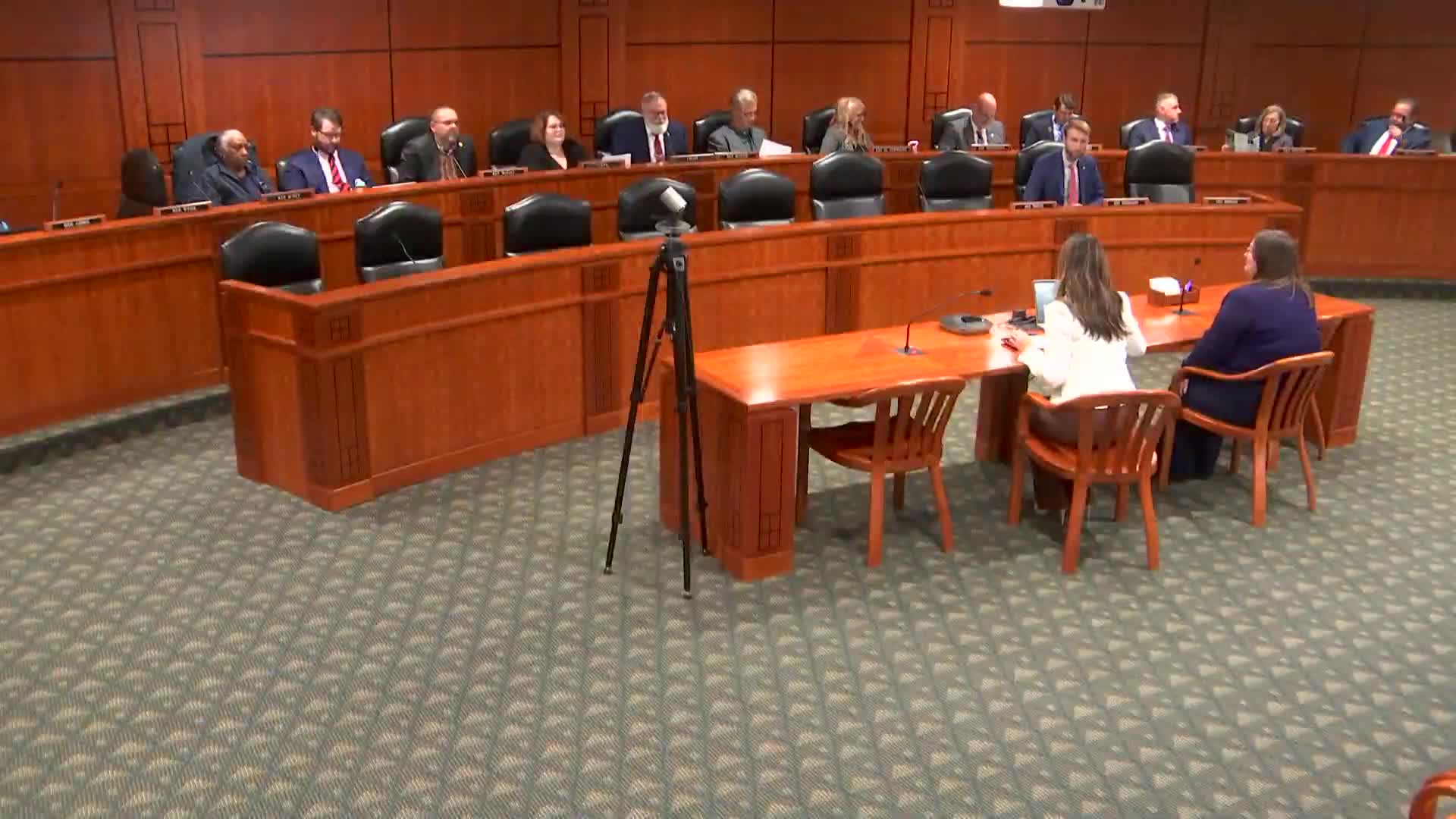Michigan Trails and Greenways Alliance urges state investment, calls trails "core infrastructure"
October 20, 2025 | 2025 House Legislature MI, Michigan
This article was created by AI summarizing key points discussed. AI makes mistakes, so for full details and context, please refer to the video of the full meeting. Please report any errors so we can fix them. Report an error »

LANSING — The Michigan Trails and Greenways Alliance told the House Natural Resources and Tourism Committee on Wednesday that nonmotorized trails should be treated as core infrastructure and that the state should invest more in trail development and maintenance.
Andrea LaFontaine, executive director of the Michigan Trails and Greenways Alliance, and colleague Megan Miernack described the alliance's MyTrails 2050 initiative, which held six community engagement summits across the state to shape a 25-year vision for trails. LaFontaine said the group's work shows trails contribute to public health, local economies and transportation alternatives.
"Trails are core infrastructure," LaFontaine told the committee. "They're out there. They need to be maintained. They need to be developed." She said trails support businesses such as bike shops, restaurants and lodging, and cited studies and local examples where trails generated measurable economic activity.
The alliance said it represents a range of nonmotorized routes — paved and natural surface trails, water trails, and multiuse connections — and partners with counties, municipalities and nonprofits. Funding sources listed included grants, foundation and private donations, and local government contributions; the alliance also urged timely consideration of proposed state trust fund bills and suggested forming an outdoor recreation caucus to coordinate legislative priorities.
LaFontaine acknowledged maintenance is an under-addressed issue, especially as older rail-trail corridors approach the end of their design lives. "Communities are becoming creative," she said, noting municipalities increasingly bake maintenance costs into capital campaigns but that stable, statewide funding is needed.
Committee members raised questions about right-of-way and property-ownership challenges, maintenance funding, and the relationship between nonmotorized and motorized trail networks. Representative Preston noted snowmobile and ATV routes are important economic drivers in northern districts; LaFontaine said the alliance partners with those communities even though its direct focus is nonmotorized trails.
The presentation highlighted local examples — the Boardman Lake Loop, the Grand River Greenway, and Border-to-Border Trail connections — and called for investments that close connectivity gaps and expand access. The alliance also noted an ebike toolkit it developed to help communities address e-bike concerns on shared trails.
The committee received the presentation with interest and invited the alliance to continue discussions on funding approaches and policy measures that would support both new trail development and long-term maintenance.
Andrea LaFontaine, executive director of the Michigan Trails and Greenways Alliance, and colleague Megan Miernack described the alliance's MyTrails 2050 initiative, which held six community engagement summits across the state to shape a 25-year vision for trails. LaFontaine said the group's work shows trails contribute to public health, local economies and transportation alternatives.
"Trails are core infrastructure," LaFontaine told the committee. "They're out there. They need to be maintained. They need to be developed." She said trails support businesses such as bike shops, restaurants and lodging, and cited studies and local examples where trails generated measurable economic activity.
The alliance said it represents a range of nonmotorized routes — paved and natural surface trails, water trails, and multiuse connections — and partners with counties, municipalities and nonprofits. Funding sources listed included grants, foundation and private donations, and local government contributions; the alliance also urged timely consideration of proposed state trust fund bills and suggested forming an outdoor recreation caucus to coordinate legislative priorities.
LaFontaine acknowledged maintenance is an under-addressed issue, especially as older rail-trail corridors approach the end of their design lives. "Communities are becoming creative," she said, noting municipalities increasingly bake maintenance costs into capital campaigns but that stable, statewide funding is needed.
Committee members raised questions about right-of-way and property-ownership challenges, maintenance funding, and the relationship between nonmotorized and motorized trail networks. Representative Preston noted snowmobile and ATV routes are important economic drivers in northern districts; LaFontaine said the alliance partners with those communities even though its direct focus is nonmotorized trails.
The presentation highlighted local examples — the Boardman Lake Loop, the Grand River Greenway, and Border-to-Border Trail connections — and called for investments that close connectivity gaps and expand access. The alliance also noted an ebike toolkit it developed to help communities address e-bike concerns on shared trails.
The committee received the presentation with interest and invited the alliance to continue discussions on funding approaches and policy measures that would support both new trail development and long-term maintenance.
View full meeting
This article is based on a recent meeting—watch the full video and explore the complete transcript for deeper insights into the discussion.
View full meeting
